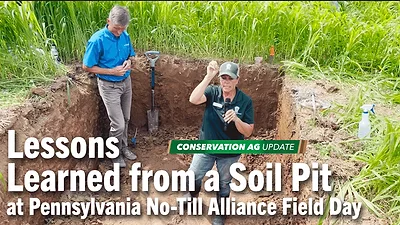Advertise Follow Us
Items Tagged with 'cover crops'
ARTICLES
[Podcast] Exploring Compaction Contributors & Solutions in Strip-Till Systems
On this edition of the Strip-Till Farmer podcast, brought to you by Environmental Tillage Systems (ETS), Understanding Ag consultant Brian Dougherty gets to the root of compaction.
Read More
Microbes, Mycorrhizae Key to Understanding Nutrient Content of Cover Crops
Soil health specialist Jim Hoorman unearths relationship between cover crops & nutrient content in the soil
Read More
Strip-Till & Cover Crop Benefits Showcased During CTIC Tour
Garretson, S.D., farmer details journey from conventional tillage to strip-till & no-till
Read More
From Dryland to Dripline: Early Tech Adoption Pays Off for 2025 Strip-Till Innovator
Ray Flickner boosts profitability & water use efficiency with strip-till & subsurface drip irrigation
Read More
Strip-Till Revives Soil After Years of Conventional Tillage
Third-generation farmer solves erosion problems with strip-till & cover crops
Read More
Cover Crops Bolster Systems Approach to Weed Management
Growers can tackle weed pressure & herbicide resistance with covers and help from many other ‘little hammers’
Read More














